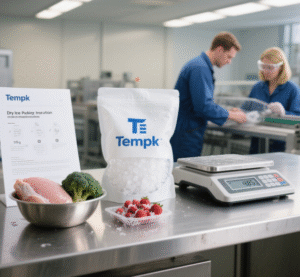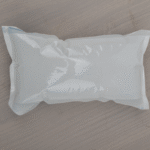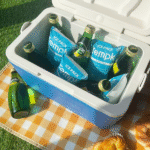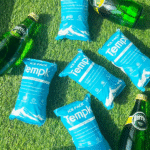تعبئة الثلج الجاف Instruction (2025): A Practical, Compliant How‑To
يستخدم تغليف التهوية, علامة “Dry Ice”/“Carbon dioxide, صلب" + و 1845, يضيف صافي كتلة الجليد الجاف بالكيلوغرام على الحزمة الخارجية, and apply a فصل 9 تسمية الخطر (min 100×100 mm). للهواء, يتبع هنا PI954, احترام ≤ 200 kg per package cap, and include the dry‑ice line on the على شعب الطريق (AWB):UN 1845, Dry Ice, x packages × y kg (net per package) (no Shipper’s Declaration when cooling غير DG; carrier/state variations may apply).
USPS is different: domestic air mail ≤ 5 lb of dry ice لكل قطعة و requires a إعلان الشاحن affixed; يتم حظر البريد الدولي مع الجليد الجاف.
-
1) What rules actually apply in 2025
-
2) Marks, تسميات, sizes—exactly what goes where
-
3) ما مقدار الجليد الجاف للاستخدام (آلة حاسبة & rules of thumb)
-
4) خطوة بخطوة (PI 954‑aligned)
-
5) Carrier specifics: FedEx, يو بي إس, USPS
-
6) Dry ice pack for shipping food (practical recipe)
-
7) أمان (التعرض CO₂, تنفيس, تصرف)
-
8) 2025 updates to watch
-
9) التعليمات
1) What rules actually apply in 2025
هواء (global): IATA DGR PI 954 governs dry ice (و 1845). It requires تنفيس التغليف, proper وضع العلامات & وضع العلامات, ال net dry‑ice mass in kg على الحزمة, و AWB information when a Shipper’s Declaration isn’t required (i.e., dry ice used only as a refrigerant for non‑dangerous goods). Operators may impose variations and ask you to declare dry‑ice weight at booking.
نحن. (all modes / aircraft specifics): 49 CFR § 173.217 requires تغليف التهوية و صافي الكتلة (كجم) on the outside للهواء. Documentation for air transport of dry ice used only as refrigerant is generally handled on the AWB when no DGD is required.
USPS mail (postal network): USPS تعليمات التعبئة والتغليف 9A caps هواء mailpieces at ≤5lb الثلج الجاف لكل قطعة, requires فصل 9 وضع العلامات والعلامات, و requires a Shipper’s Declaration for air mail; يتم حظر البريد الدولي مع الجليد الجاف. (USPS surface mail rules differ.)
EU road (ADR): Dry ice used as a coolant is not subject to ADR beyond section 5.5.3 (asphyxiant‑gas provisions)—focus on vehicle ventilation and the package/vehicle markings that may apply in ventilation‑risk scenarios.
2) Marks, تسميات, sizes—exactly what goes where
On the outer package (هواء):
-
اسم الشحن الصحيح: "الجليد الجاف" أو "ثاني أكسيد الكربون, صلب"
-
و 1845
-
صافي الكتلة من الجليد الجاف بالكيلوغرامات (kg only)
-
فصل 9 تسمية الخطر, minimum 100 mm × 100 mm
-
Shipper & consignee addresses (same panel when feasible)
Practical rules that stop rejections: Keep the Class 9 label clear (don’t write inside the diamond). يضع و 1845 و صافي كجم adjacent to the Class 9 when space allows. Use the AWB line for non‑DG cargo chilled by dry ice.
Why venting matters: التغليف يجب تصريح إصدار CO₂; sealed containers can rupture. That’s a requirement in 49 CFR § 173.217 and mirrored in carrier job aids.
Package quantity limits: Under PI 954, the typical maximum net dry ice per package is 200 kg (operators may set lower limits).
3) ما مقدار الجليد الجاف للاستخدام (آلة حاسبة & rules of thumb)
Engineering method (most accurate):
يمتص الجليد الجاف ~571 kJ/kg على التسامي. Estimate your shipper’s heat gain (kJ/h), multiply by transit hours, then ÷ 571 to get kg of dry ice; يضيف +20-30 ٪ المخزن المؤقت for handoffs or hot routes.
-
صيغة:
Dry‑ice kg ≈ (Heat gain kJ/h × Hours) / 571, then × 1.2-1.3 (المخزن المؤقت) -
Source for enthalpy: NIST Chemistry WebBook.
Field rule of thumb (fast planning):
خطة على ~ 5-10 رطل (2.3-4.5 كجم) لكل 24 ساعة في well‑insulated الشاحن; blocks last longer than pellets. Start at the low end in VIP/thick EPS; يضيف +25-50 ٪ للممرات الساخنة (> 90 °F) or thin insulation.
الموضع: Top‑load blocks and surround with pellets; cold gas sinks, so top‑down cooling is efficient. (University and carrier guidance recommend top placement.)
4) خطوة بخطوة (PI 954‑aligned)
-
ما قبل الشرط: Freeze product; pre‑chill the shipper interior.
-
Choose vent‑capable insulation: EPS/EPP/VIP or validated systems; no airtight liners/lids.
-
خط & segregate: Poly liner/absorbent as needed; prevent direct dry ice contact with unpackaged food.
-
Load & position dry ice: كتل في الأعلى, pellets around sides; stabilize voids to prevent shifting.
-
Close—but do not seal airtight: Tape outer carton but maintain vent paths.
-
Apply marks & تسميات: “Dry Ice/Carbon dioxide, صلب," و 1845, صافي كجم, Class9 (100× 100mm).
-
Complete documents: For non‑DG cooled by dry ice, put the dry‑ice line on the AWB; check operator/state variations.
-
Tender & track: Ship early in the week; use data loggers for high‑value lanes.
5) Carrier specifics: FedEx, يو بي إس, USPS
-
FedEx (هواء): On paper airbills, check “Shipper’s Declaration NOT Required” (when dry ice only cools non‑DG). Use this AWB syntax:
UN 1845, Dry Ice, __ x __ kg(packages × net kg per package). أيضًا, Class 9 label must be ≥ 100×100 mm; don’t write inside the diamond. -
يو بي إس: Expect an acceptance audit. علامة "الثلج الجاف/ثاني أكسيد الكربون, Solid” + و 1845; keep packages تنفيس; UPS healthcare guidance echoes the 5-10 رطل/24 ساعة planning rule.
-
USPS mail: Domestic air: ≤5lb لكل بريد + Class9 + required markings و أ Shipper’s Declaration affixed. International: محظور.
6) الجليد الجاف pack for shipping food (practical recipe)
-
هدف: Keep frozen foods below 0 °C for 48 ح on 2‑day service.
-
ابدأ مع: 10-20 رطل dry ice for a medium EPS (20–30 qt) الشاحن (increase in summer or thin walls).
-
Method: Pre‑freeze goods, line with poly, top‑load dry ice blocks, fill side voids with pellets/foam, يحفظ مسارات تنفيس.
-
وضع العلامات: “Dry Ice/Carbon dioxide, صلب," و 1845, صافي كجم, Class9.
Want to target the keyword “dry ice pack for shipping food” more directly? Link this section to a deeper recipe page (internal hub) with packout photos and calculators.
7) أمان (التعرض CO₂, تنفيس, تصرف)
-
حدود التعرض: OSHA PEL 5,000 ppm (8-H اثنين); Stel 30،000ppm. NIOSH IDLH 40,000 ppm. Use ventilation and avoid confined spaces and vehicles without airflow.
-
حجم الغاز: ~250 L CO₂ per lb of dry ice—one reason airtight is a hard لا.
-
PPE: Insulated gloves and eye protection; avoid direct skin contact (مخاطر قضمة الصقيع).
-
تصرف: Let remaining dry ice sublime in ventilated areas; never in sinks/closed rooms (risk of pressure/CO₂ buildup).
8) 2025 updates to watch
-
IATA 2025 قوائم مراجعة القبول: IATA published a 2025 قائمة مراجعة قبول الجليد الجاف template; operators can request declared net dry ice at booking to manage aircraft CO₂ limits. Continue to check operator/state variations.
-
Core DGR edition: ال 66th Edition (effective Jan 1, 2025) is in force; addenda may update checklist wording—stay current on the IATA site and your carrier job aids.
9) التعليمات
س 1: Is there a hard maximum per package by air?
أ: Commonly ≤ 200 kg net dry ice per package under PI 954; carriers can impose lower limits or aircraft‑type caps. Always verify operator variations.
Q2: Do I need a Shipper’s Declaration (DGD) للثلج الجاف?
أ: Not when dry ice is فقط تبريد non‑dangerous goods in air cargo—use the AWB entry. If cooling البضائع الخطرة, a DGD is required. ملحوظة: USPS air mail requires a DGD even for dry‑ice‑cooled non‑DG.
س 3: Pounds or kilograms on the box?
أ: Kilograms are required on the outer package for air shipments (كتلة الجليد الجافة الصافية).
س 4: What’s the most common labeling mistake?
أ: Missing صافي كجم and undersized Class9 تسميات. يستخدم 100 × 100 mm minimum; don’t write inside the diamond.
س 5: Can I send dry‑ice‑cooled parcels by USPS internationally?
أ: لا. International mail containing dry ice is محظور by USPS
























